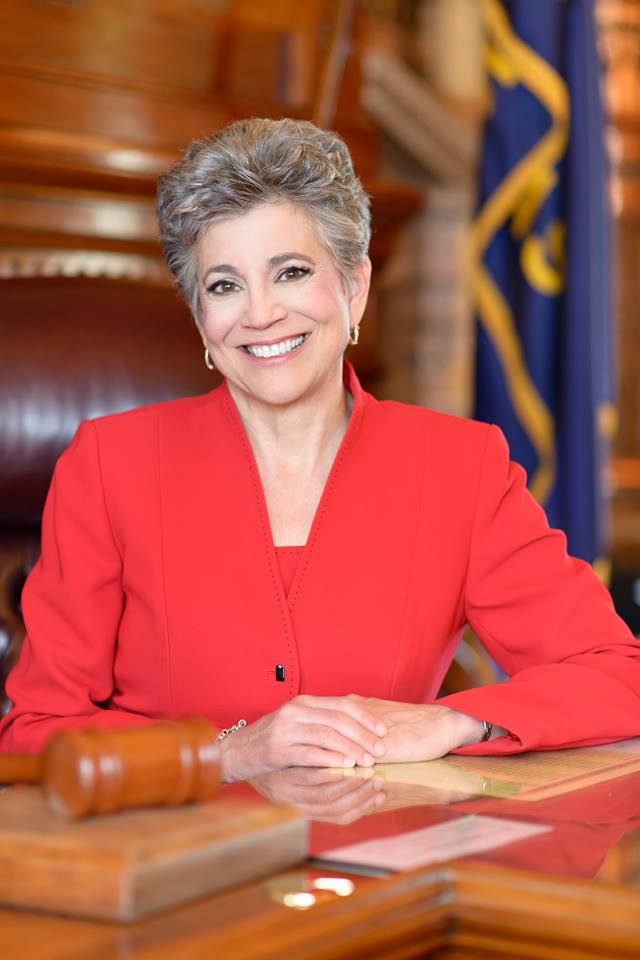Kansas Senate president: No rush to write new school funding formula

Senate president Susan Wagle, R-Wichita, is pictured at the Kansas Statehouse in this file photo from Monday, June 8, 2015.
Topeka ? The Kansas Supreme Court said this week that it may not allow public schools to open next year if Kansas lawmakers do not come up with a constitutional way of funding them.
But the president of the Kansas Senate said Friday that it’s unrealistic to expect lawmakers to devise a new school funding system in the remaining weeks of the 2016 session, and she thinks the process will take at least another year.
“I’ve said all along that a new finance formula takes a lot of collaboration, a lot of communication, and the needs of the districts are very diverse,” said Sen. Susan Wagle, R-Wichita. “And to try and pack a new formula into two months is not a reasonable request from the court.”

Sen. Susan Wagle
Last year, lawmakers repealed the funding formula that had been in place since the early 1990s and replaced it for two years with a system of block grants.
The amount each of the 286 districts receives in a block grant is based largely on what they had received during the 2014-2015 school year. It includes the base per-pupil aid plus the additional aid for capital outlay and local option budgets, all rolled into one grant that allows more flexibility in the way districts spend it.
But the way capital outlay and local option budget aid was changed resulted in sizable cuts for most districts. And the state Supreme Court said it violates the Kansas Constitution because it creates wealth-based disparities, requiring poorer districts to levy higher property tax rates than wealthier districts in order to fund comparable educational programs.
The court gave the Legislature until June 30, the last day of the current fiscal year, to solve the inequities, and it said the path lawmakers choose to take between now and then will determine whether schools can reopen in August.
Some have suggested lawmakers could reinstate the old formula for capital outlay and local option budget aid, and it would probably pass muster with the court, as long as there is adequate funding. But Wagle dismissed any such suggestion.
“I don’t know of any senators who want to go back to the old formula,” Wagle said. “We repealed the old formula for a reason.”
One of those reasons was that it was difficult for lawmakers or budget officials to predict how much the state would be called upon to spend from year to year.
That’s because lawmakers would set the state budget in the spring, but school districts set their budgets in August. And often, school districts would make decisions to increase their local option budgets, or take on more capital outlay projects, that would result in higher-than-expected costs to the state.
That had became an acute problem in recent years as revenue collections lagged, and the state teetered on the brink of having being unable to pay all of its budgeted expenditures, let alone any new, unexpected costs for K-12 school funding.
But Sen. Laura Kelly, of Topeka, the ranking Democrat on the Senate Ways and Means Committee, said she thinks the job could be done this session, if GOP leaders allocate the Legislature’s time and resources wisely.

Sen. Laura Kelly
“We’ve sort of built up a bunch of days, so there would be a way, if we wanted to, that we could just work through and get it done,” she said.
The legislative calendar currently provides for a three and a half week break in April. That’s the time between “first adjournment,” or the end of the regular session, and the start of the “veto session” when lawmakers return to address any bills vetoed by the governor and to finalize the budget.
But both chambers are dealing with an unusually small number of bills this year. And with passage by both chambers this week of their preliminary budget plans, House and Senate leaders are now considering the idea of moving first adjournment up a week, to sometime in late March.
That would leave an entire month or more during which a new school finance plan could be developed, Kelly said.
“It might actually be a little bit smarter to take that break time and have a group of folks work on a finance formula,” she said. “That’s very hard to do in committee. So if they just had a special task force and had those folks meeting over the break, get a formula in place. We’ve already got a template (from the old formula). There’s not really a whole lot of work you need to do.”
House and Senate leaders are expected to decide next week whether to extend the break by advancing the day of first adjournment.







